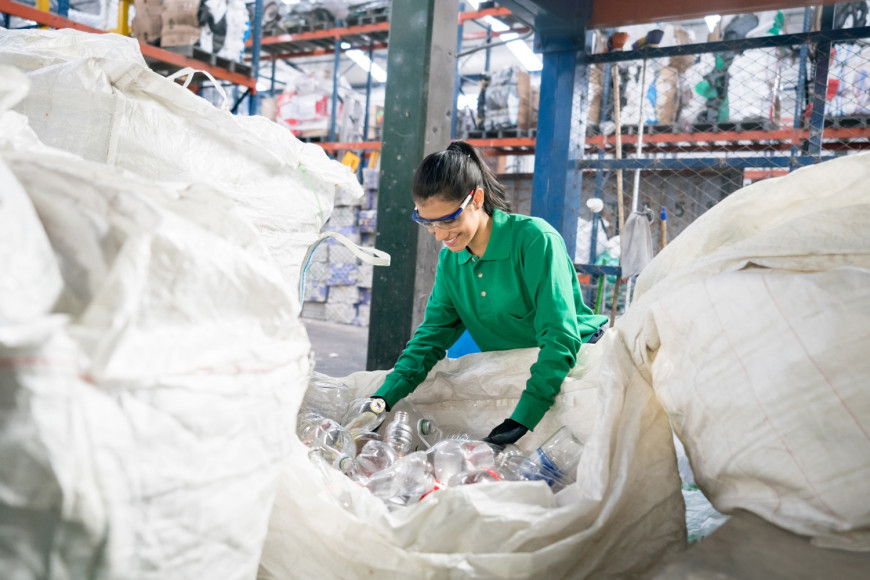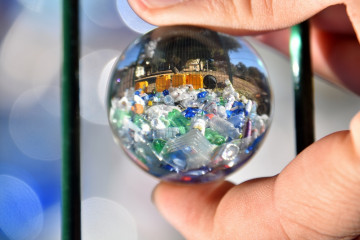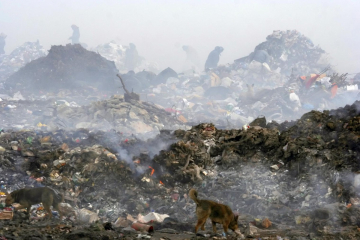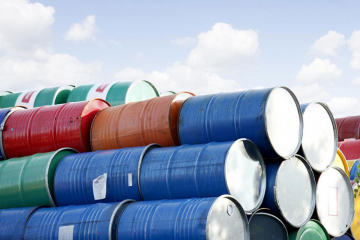When you think of responsible resource management, stewardship may not be the first word to come to mind. However, when a business takes thoughtful steps towards waste reduction and disposal, those actions have a huge impact both for the company and the planet. Treating resources with mindfulness and care gives your business the opportunity to have influence for considerate use of our environment and considerate use of our resources.
In the past, responsible resource management focused on water and energy stewardship. Thanks to growing awareness, government regulations, and financial incentives, companies have been optimizing their energy usage like never before.
Responsible Materials Management: An Evolving Practice
More than ever, it is commonplace for businesses to incorporate renewable energy options, along with efforts to reduce their carbon footprint. Companies recognize the importance of understanding your environmental impact. For example, companies have quickly seen the importance of applying energy efficiencies to production, noting the return of investment for cleaner energy.
When it comes to water conservation, you will be hard-pressed to find an industry that does not need water. Beyond the food and agricultural world — high tech, manufacturing, beverage, construction, and energy services are all industries that depend on thoughtful water management. Be it to cool equipment or nourish crops, proper water management is a tenant for any company focused on sustainability.
However, if your company is looking to become a true leader as a considerate sustainability leader, water and energy management are just two pieces of a larger puzzle. While both are crucial, there are additional responsible resource management considerations every business should invoke to have the greatest positive influence on the environment. Let’s dive into the modern playbook of sustainable resource management.
The Next Wave of Responsible Materials Management
The United Nations has stated that we are in a new paradigm of sustainable resource management. To be at the forefront of this movement, there are a number of additional initiatives companies must focus on. Here are five critical areas of sustainability every business should explore:
1. Waste as a resource
This may sound counterintuitive, but one of the best ways you can be a leader in responsible resource management is by approaching waste as a resource. Here are a few innovations to consider implementing:
- Apply circular engineering
- Reuse materials on-site (polyol, pallets)
- Reuse materials externally (scrap leather)
- Recycle materials on-site (solvent distillation)
- Recycle materials off-site (metal, oil, electronics)
- Compost (on or off-site)
- Recover energy from materials/waste
- Incinerate/treat wastes to destroy, detoxify, and/or neutralize wastes into less harmful substances
2. Waste minimization and reduction
Ideally, a business can operate under a zero waste model. However, when that is not attainable, then waste reduction is still achievable. The high-tech industry (electronics manufacturing, data centers, semiconductor fabrication, etc.) is constantly evolving its approach to waste minimization. Here are a few innovative ways to cut down on waste:
- Design products with sustainability in mind, putting a circular economy into practice. This includes substituting materials that are ethically sourced and easy to recycle.
- Incorporate electronic waste recycling and recovery. For example, Apple has a trade-in policy that allows customers to bring in old electronics in exchange for store credit. Apple then handles recycling these items, keeping them out of landfills.
- Make sure your data center is energy efficient. It takes a lot of energy to keep servers cool. Using liquid cooling or free air-cooling technologies can help improve environmental impact. Or you can take a cue from Google and use AI to make your data center more efficient.
3. Chemicals and substances
Over the past number of years, there has been an increase in scrutiny on chemicals, specifically two subsets of chemicals and substances — and for good reasons. They are PFAS and VOCs (Volatile Organic Compounds). PFAS, also known as “forever chemicals,” are found in human-made inventions like Teflon, stain-resistant materials, and waterproof fabrics. Once made, they do not go away. VOCs like methylene chloride are chemicals that quickly evaporate into the air, causing indoor pollution. They are present in fuel, paint, and cleaning products.
Both PFAS and VOCs can cause major environmental and health issues, which is why managing these compounds is important. Monitoring your company's use of these chemicals helps mitigate risks, reduce liabilities, and ensure compliance with evolving environmental regulations.
An excellent first step to responsible resource management for chemical substances is to map out all chemical usage within your operations. Take an unflinching eye toward auditing all the chemicals used in your company’s products, manufacturing, and supply chains. It’s the only way to get a complete picture to invoke changes.
Every chemical that is mapped out should be evaluated for its environmental impact and risks to human exposure. This also applies when your business is researching new chemicals and substances to use. If you are unsure about where to get more information regarding regulations for certain PFAS or VOCs, start by checking in with the EPA.
4. Air quality and emissions
What is your business's impact on the air quality both outside and within the walls of your facility? It’s a vital question anyone interested in responsible resource management needs to ask. Exposure risks for an operation can include indoor workspaces and outdoor emissions. For example, if your business has a manufacturing facility, you will want to ensure that the air quality inside is clean and free of VOCs or greenhouse gasses (GHGs). This benefits not only the health of your workers but also the health of the environment around your factory.
To understand your company's air quality, you must first get a hold of your emissions data. Measure these airborne byproducts to help pick the best emission control technologies. There are scrubbers that can remove GHGs from the air and thermal oxidizers that burn off VOCs. It all depends on what your emissions are. However, the goal remains the same: find the technology that eliminates the emissions sources completely.
5. Raw materials
It’s not only the chemicals you need to keep an eye on. Knowing the ins and outs of the raw materials used to build, package, and transport your product is essential to responsible resource management. Businesses must put equal scrutiny on how these materials are sourced to reduce human, environmental, and social risks and impacts.
One of the ways to do this is by integrating a sustainable materials management system, or circular economy. Rather than designing a product for its use alone, this type of materials management asks companies to think about the entire life of a product, including:
- Raw material acquisition
- Materials manufacture
- Production
- Use/reuse/maintenance
- Waste management
In examining each of these stages, companies can spot where to reduce the use of toxic chemicals, discover new ways to recycle parts of their product, or even find alternatives to virgin materials.
The Human Side of Responsible Resource Management
While much of this discussion of a management plan has centered on environmental effects, it's important to remember the human side of every business. Each company is run by people, and as an employer, it is your duty to provide safe labor conditions that do not infringe on human rights. Responsible companies must ensure ethical treatment, not only of their direct hires but of the people with whom their product interacts in every stage of the supply chain. Always put human safety first.
Navigating environmental impacts responsibly
Sustainable energy and water usage will always be part of responsible resource management, but they are only the first steps. To truly be an eco-friendly leader, businesses must be willing to look at every step of their product's life cycle to spot hazardous waste and improve the company’s environmental impact.
While it may seem overwhelming at times, your business doesn’t have to do it alone. Antea Group is here for all your resource and material management needs.
Want more news and insights like this?
Stay in the loop with our monthly e-newsletter, The New Leaf. We’re here to keep you informed, enlightened, and entertained with the latest in EHS and sustainability. Don’t miss out on the insights and stories that matter to you!✨ Ready to turn over a new leaf? Sign up now!
Have any questions?
Contact us to discuss your environment, health, safety, and sustainability needs today.






